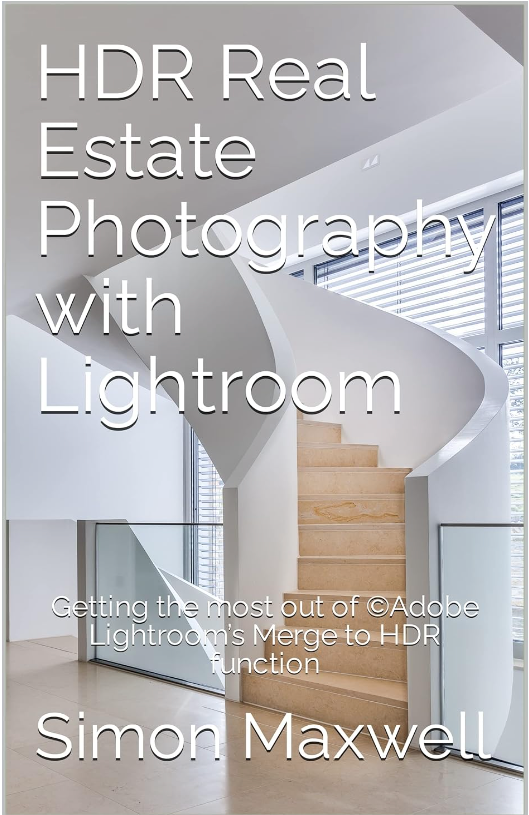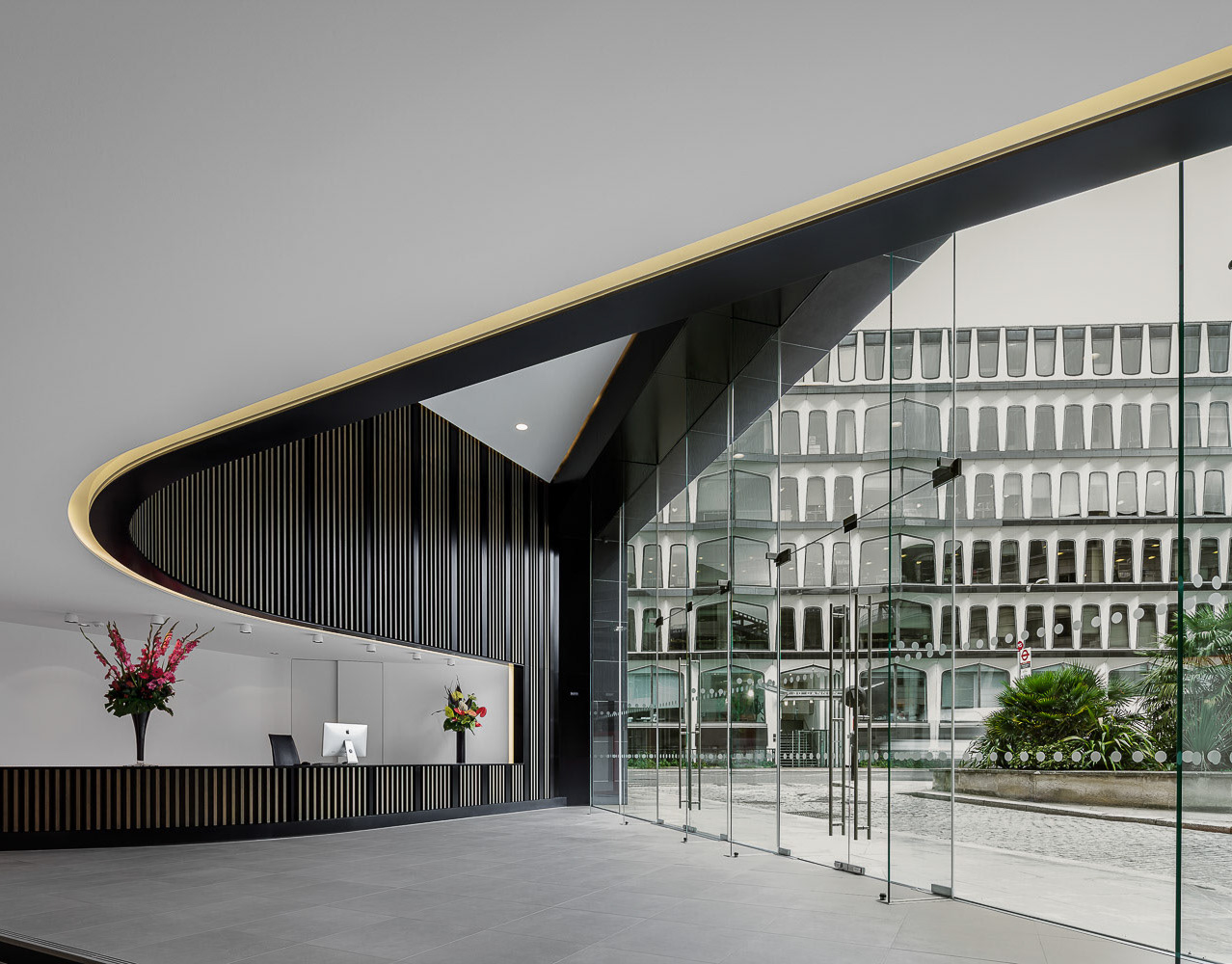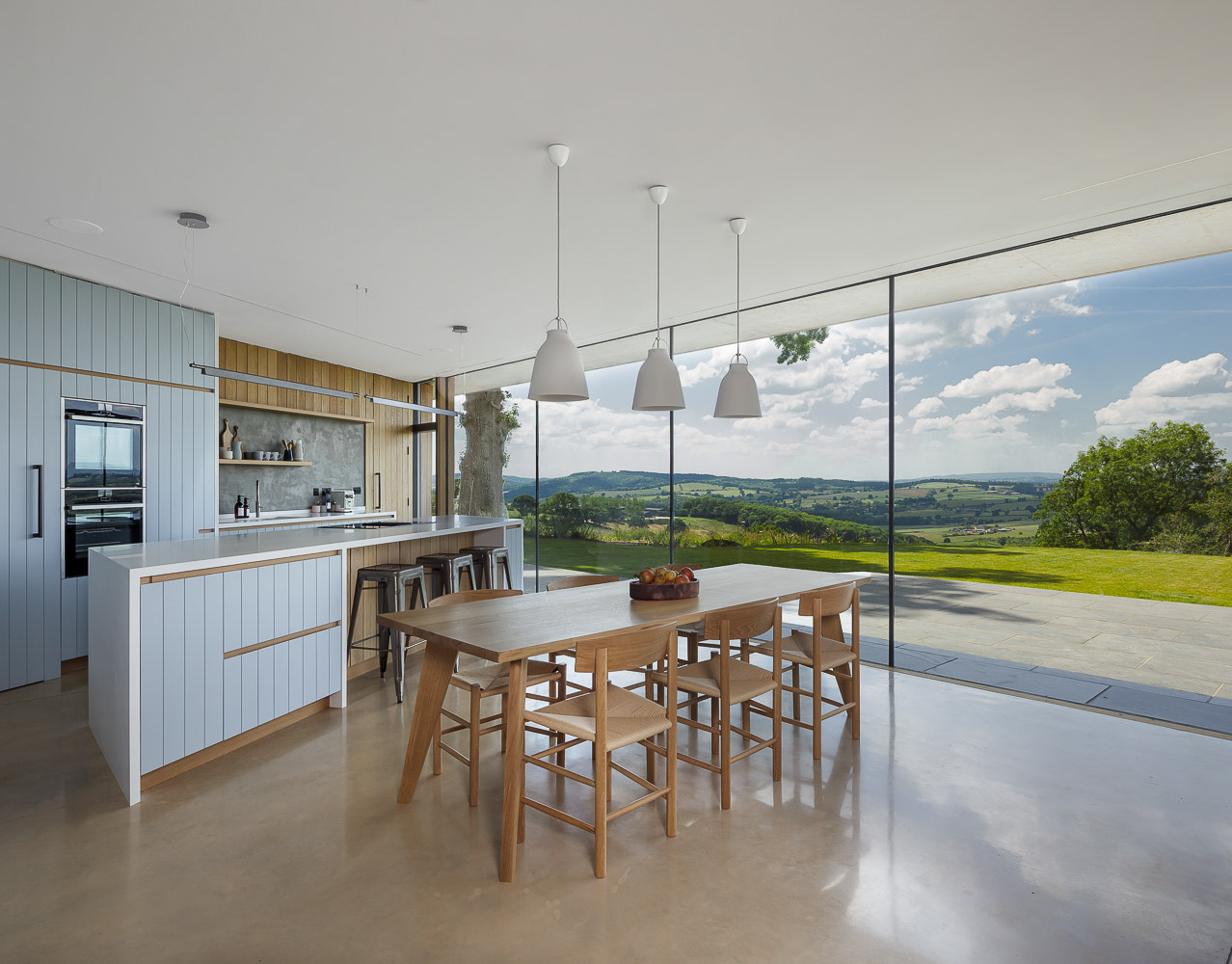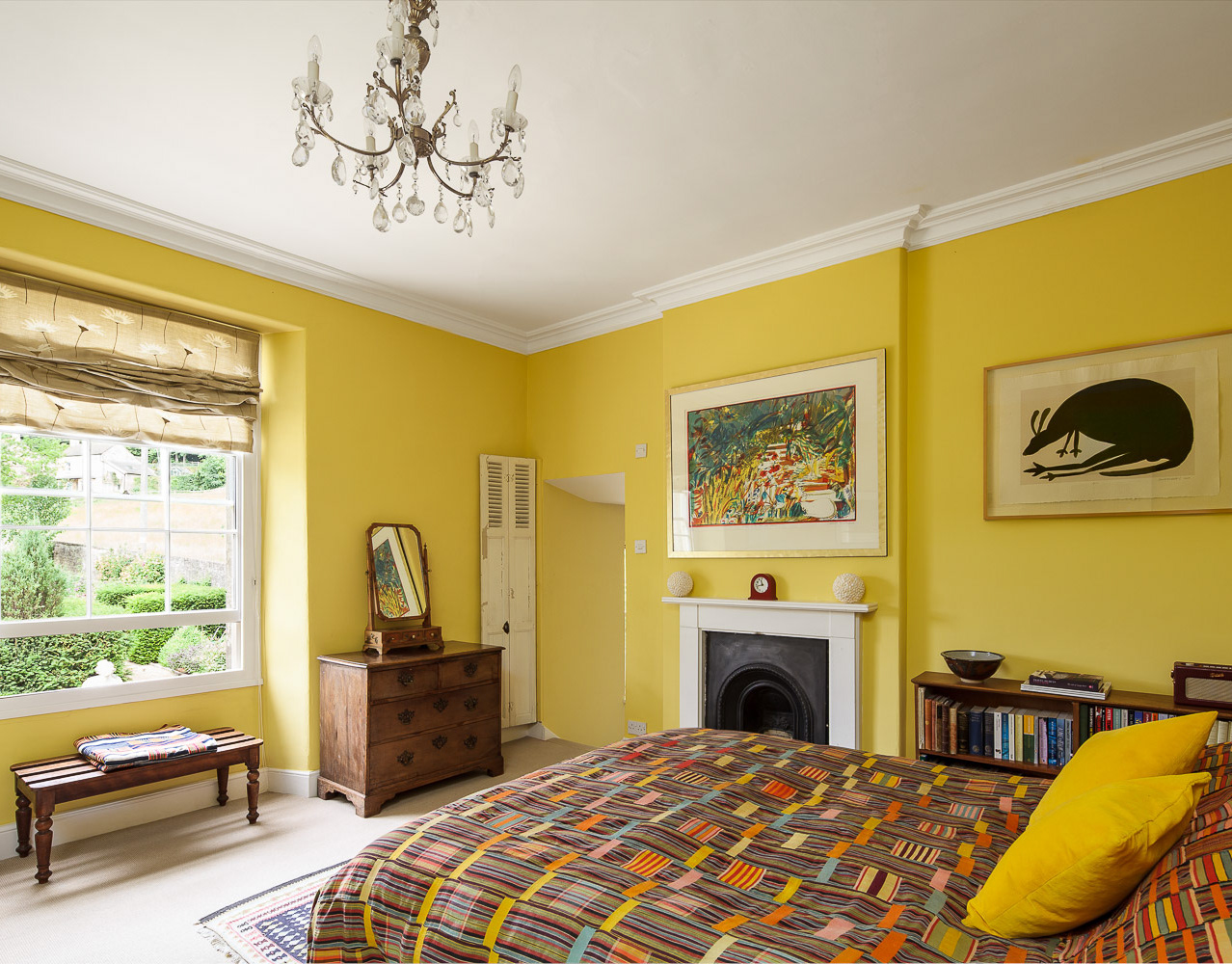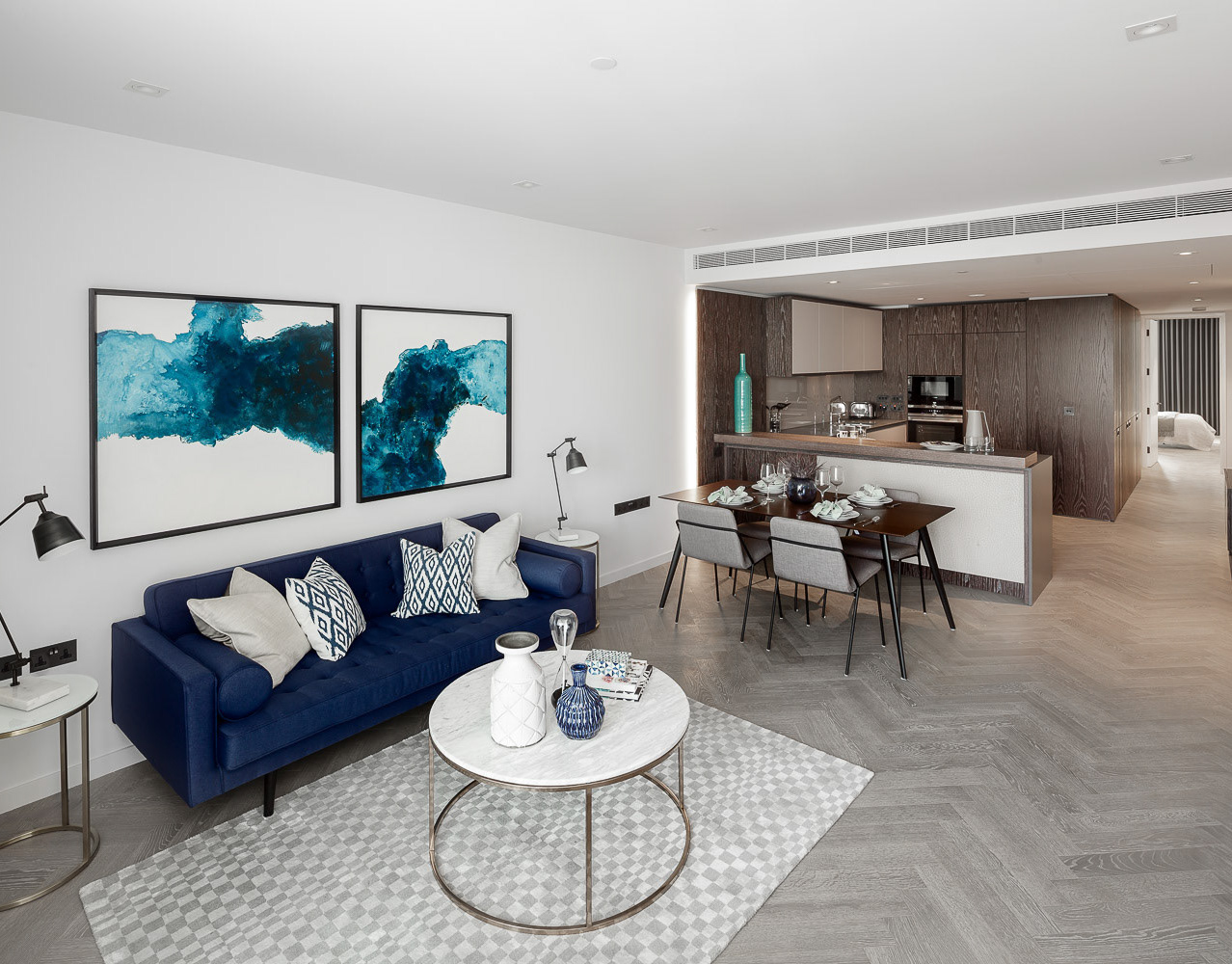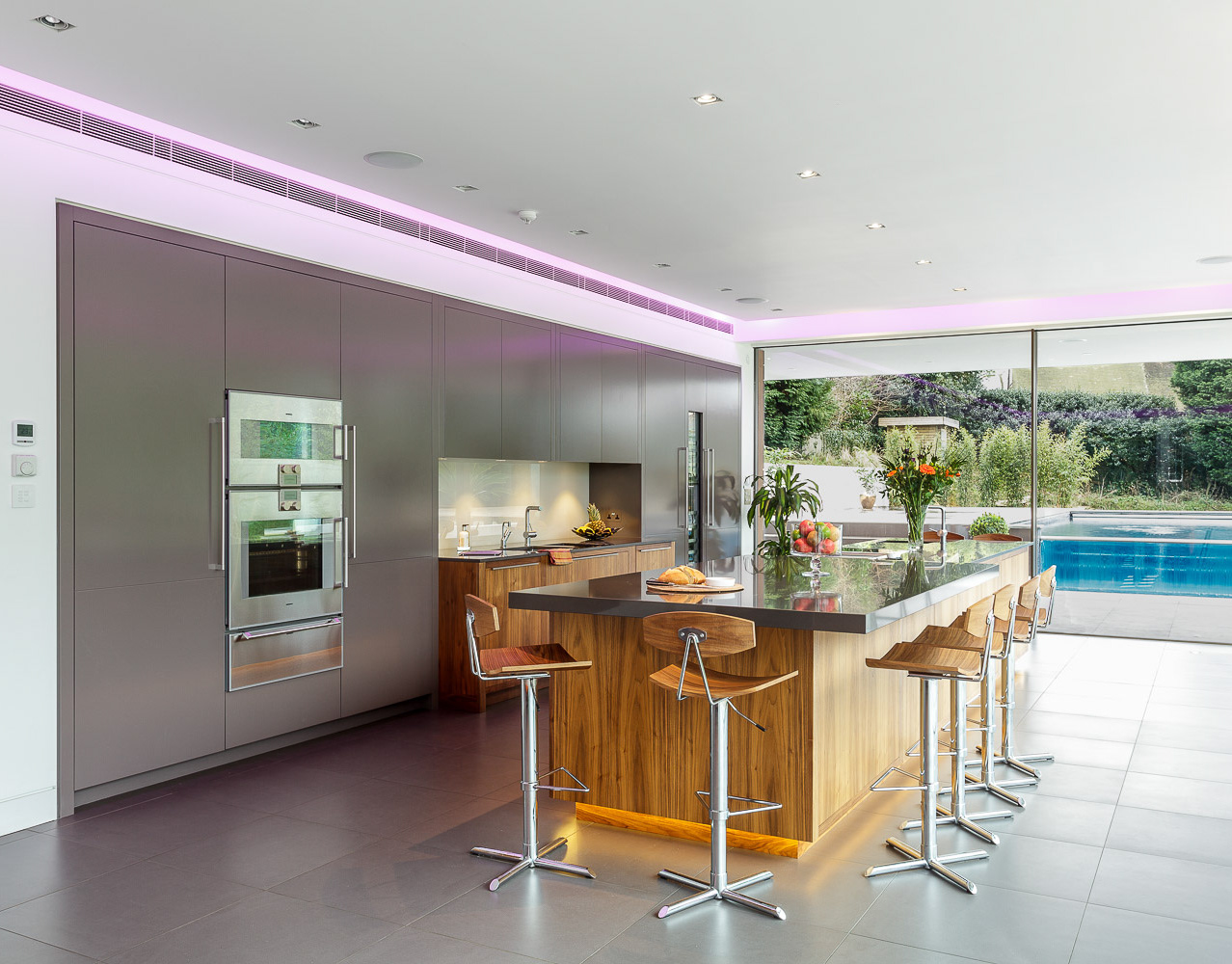Allow me to share my processing methods and a bit about my own photographic journey...
Introduction
When it comes to image processing, I feel I have some credentials to share: I have been working with Adobe products since 2002, and have seen how Photoshop has emerged as the giant of a program that it is, and more recently the refinement of Lightroom as a database management system with its own now highly developed editing tools such as masking and perspective control. While I am conversant with Capture One, I find that the refinements in colour profiling, the improvement in tethered operation and seamless integration with Photoshop, have made Lightroom my choice of RAW injester, largely due to the very large archive I need to maintain.
From silver and the dark room to digital and the light room
As an architecture and interiors photographer, who used to work on 5x4 Sinar large format and Hasselblad medium format cameras, I was fascinated at an early stage by the opportunities to combine images afforded by working with layer masking in Photoshop. By 2008 I was producing commercial work exclusively shot and processed with digital methods and using a version of HDR and image compositing to deliver images to my clients which simply would not have been possible via single capture film scans alone.
Concurrently, I was also a keen darkroom worker. Although the majority of my commercial work in the 80s and 90s was produced on colour transparency, a real passion of mine was for black and white photography. I studied Ansel Adams’s Zone System to the point of obsession, and in the early noughties worked with Ilford Multigrade papers and split filter printing to solve the ongoing issue of image contrast build up between the negative and the print. Based on advice in Adams's book “The Negative”, I carried out a primitive form of HDR photography which involved pre-exposing the film to a base layer of exposure by shooting an out of focus gray card: what a long way we have come....! I like to think that the old master would have approved! I embraced digital processing for its ability to really draw the most from an image in terms of tonal information; working with a spotmeter in the field and luminance levels in a digital context, I felt I was creating something of a bridge between analogue methods and the “digital darkroom”. My approach of breaking scenes down into "zones" or tonal bands of differing luminance levels, of thinking in monochrome about an image before processing it, very much informs my approach to architectural and interiors image processing in particular.
As an architecture and interiors photographer, who used to work on 5x4 Sinar large format and Hasselblad medium format cameras, I was fascinated at an early stage by the opportunities to combine images afforded by working with layer masking in Photoshop. By 2008 I was producing commercial work exclusively shot and processed with digital methods and using a version of HDR and image compositing to deliver images to my clients which simply would not have been possible via single capture film scans alone.
Concurrently, I was also a keen darkroom worker. Although the majority of my commercial work in the 80s and 90s was produced on colour transparency, a real passion of mine was for black and white photography. I studied Ansel Adams’s Zone System to the point of obsession, and in the early noughties worked with Ilford Multigrade papers and split filter printing to solve the ongoing issue of image contrast build up between the negative and the print. Based on advice in Adams's book “The Negative”, I carried out a primitive form of HDR photography which involved pre-exposing the film to a base layer of exposure by shooting an out of focus gray card: what a long way we have come....! I like to think that the old master would have approved! I embraced digital processing for its ability to really draw the most from an image in terms of tonal information; working with a spotmeter in the field and luminance levels in a digital context, I felt I was creating something of a bridge between analogue methods and the “digital darkroom”. My approach of breaking scenes down into "zones" or tonal bands of differing luminance levels, of thinking in monochrome about an image before processing it, very much informs my approach to architectural and interiors image processing in particular.
Getting to grips with high dynamic range scenes
As a solution to the problem of high dynamic range in ambient-only interiors images in particular, I worked with luminance masks in Photoshop with some success, but by 2010 I had discovered the Lightroom plugin Enfuse, which seemed to produce a pleasing blend of exposures with impressive tonal range, without introducing some of the more outlandish colour distortions which seemed to plague some of the full HDR programs available at the time.
At this time I was offering tutorials to a few amateur photographers and business owners and also gave a lecture to interior design students at the KLC school of interior design about how to photograph their own projects when starting out. This led to my creating screen recorded tutorials which I would share privately. In 2010 I produced a video and published it to You Tube: it showed how to process interiors images which had been shot in mixed lighting conditions, using luminance masking in Photoshop to combine two images independently processed in favour of either the ambient or artificial light source at work and white balancing accordingly for each. To my amazement at the time, the viewing figures for this video started to creep up, and feedback was appreciative.
You Tube and beyond
By complete chance, one Larry Lohrmann, who ran a hugely successful and influential blog site on the US called Photography for Real Estate (PFRE) saw my video and ran it as a feature. I was already a subscriber to his excellent site which included e-books about shooting interiors, notably using strobe/ flash with photographer Scott Hargis, and was pretty gob-smacked to see my video come up in his feed. Needless to say, viewing figures for my one video took off as a result.
You Tube and beyond
By complete chance, one Larry Lohrmann, who ran a hugely successful and influential blog site on the US called Photography for Real Estate (PFRE) saw my video and ran it as a feature. I was already a subscriber to his excellent site which included e-books about shooting interiors, notably using strobe/ flash with photographer Scott Hargis, and was pretty gob-smacked to see my video come up in his feed. Needless to say, viewing figures for my one video took off as a result.
Shortly after, Larry approached me about presenting videos on other aspects of interiors and architectural photography under the PFRE banner. There followed a very enjoyable collaboration during which I wrote an e-guide to using the Enfuse plugin for Lightroom as a solution for interiors images, with an on-demand video tutorial series to accompany it. Over the years we added material, such as shooting a combination of ambient and flash-filled exposures which were then hand blended or composited in Photoshop, plus shooting exteriors using Enfuse. And video releases accompanied all updates. It was a great period when there were not that many online resources for Real Estate photographers. On the back of it I worked with several photographers internationally via Skype (then!) to assist them in the development of their own technical and stylistic methods, with a particular focus on image processing for high dynamic range scenes. Around 2019 Larry moved on from PFRE and we agreed not to pursue the Enfuse angle further.
By now there were many other alternatives to the open source program that is Enfuse: and the one I now regard as my “go to” is Adobe Lightroom’s own “Merge to HDR” function, which has gone from strength to strength. I actually wrote a new book specifically covering HDR creation in Lightroom for Real Estate which is now available as an ebook on Amazon Kindle >>>
I also produced videos about using the Color Checker passport by Calibrite : this video actually racked up viewing figures of 165,00. That video got a bit “long in the tooth” and I created two fully updated videos on how to create custom camera profiles with the Color Checker in both Lightroom and Capture one which drew in viewing figures of c. 20,000 each before I removed them, as I now consider the Lumariver profiling tool to be a superior program.
(Please see the gallery below)
(Please see the gallery below)
My image processing techniques :
So my images on this site were produced with a variety of shooting and processing methods ranging from the simple to the more complex:
• Single capture RAW files, ambient only, processed with multiple local adjustments
• Single capture RAW files, ambient and flash-filled, processed with multiple local adjustments
• Ambient-only series of bracketed exposures, merged either via Enfuse for Lightroom or, more recently, Adobe Lightroom’s own Merge to HDR facility, with multiple local adjustments.
• Ambient-only series of bracketed exposures plus one or more flash-filled exposures, all merged simultaneously either via Enfuse for Lightroom or, more recently, Adobe Lightroom’s own Merge to HDR facility, plus multiple local adjustments.
• Ambient-only series of bracketed exposures, merged either via Enfuse for Lightroom or, more recently, Adobe Lightroom’s own Merge to HDR facility, plus further hand blending in Photoshop via luminosity and standard layer masking of one or more flash-filled exposures for greater control. AKA "Flambient" blending.
• Complex compositing of various single ambient and/ or flash filled exposures plus HDR blends in Photoshop.
Summary:
• Single capture RAW files, ambient and flash-filled, processed with multiple local adjustments
• Ambient-only series of bracketed exposures, merged either via Enfuse for Lightroom or, more recently, Adobe Lightroom’s own Merge to HDR facility, with multiple local adjustments.
• Ambient-only series of bracketed exposures plus one or more flash-filled exposures, all merged simultaneously either via Enfuse for Lightroom or, more recently, Adobe Lightroom’s own Merge to HDR facility, plus multiple local adjustments.
• Ambient-only series of bracketed exposures, merged either via Enfuse for Lightroom or, more recently, Adobe Lightroom’s own Merge to HDR facility, plus further hand blending in Photoshop via luminosity and standard layer masking of one or more flash-filled exposures for greater control. AKA "Flambient" blending.
• Complex compositing of various single ambient and/ or flash filled exposures plus HDR blends in Photoshop.
Summary:
I would say that the single most important aspect of my processing is the multiple mask creation which is required for each image, to which often multiple adjustment operations are attached. Some are purely remedial, some aim to enhance the scene. Once known as "Dodge and Burn" in the analog darkroom, these now supercharged digital refinements need to be applied with sensitivity towards the light at work in the scene so as to complement it and not take the image into the territory of the unbelievable. Knowing where to make adjustments, and importantly to what degree, are skills which I feel are born out of years spent working on real-life shoots and observing and studying the work of photographers and artists alike.
Your methods will of course be unique to you, and if you choose to invite me to process your images I hope that my experience in teaching and employing a wide range of techniques will make that onboarding process quite streamlined.
I am of course very happy to elaborate on my working methods via a video call. My approach is highly flexible and I am very happy to absorb your processing techniques to ensure that we maintain a consistent and lucid style to your imagery throughout.
Please feel to get in touch>>> for a chat.
I am of course very happy to elaborate on my working methods via a video call. My approach is highly flexible and I am very happy to absorb your processing techniques to ensure that we maintain a consistent and lucid style to your imagery throughout.
Please feel to get in touch>>> for a chat.
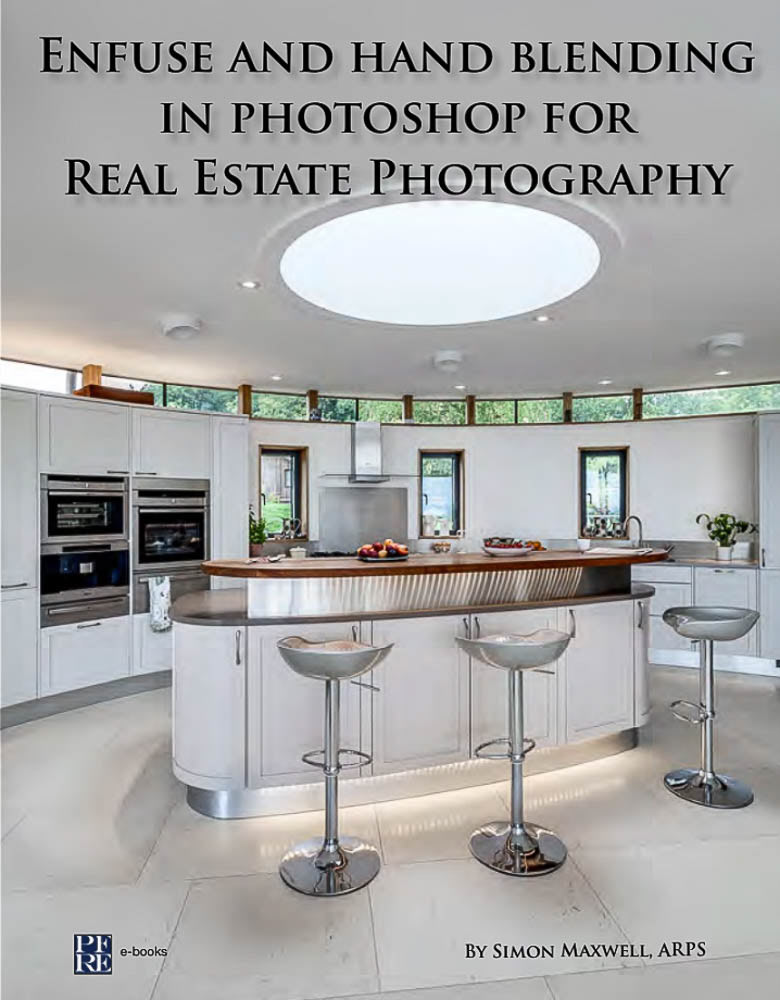
My ebook and video course for PFRE
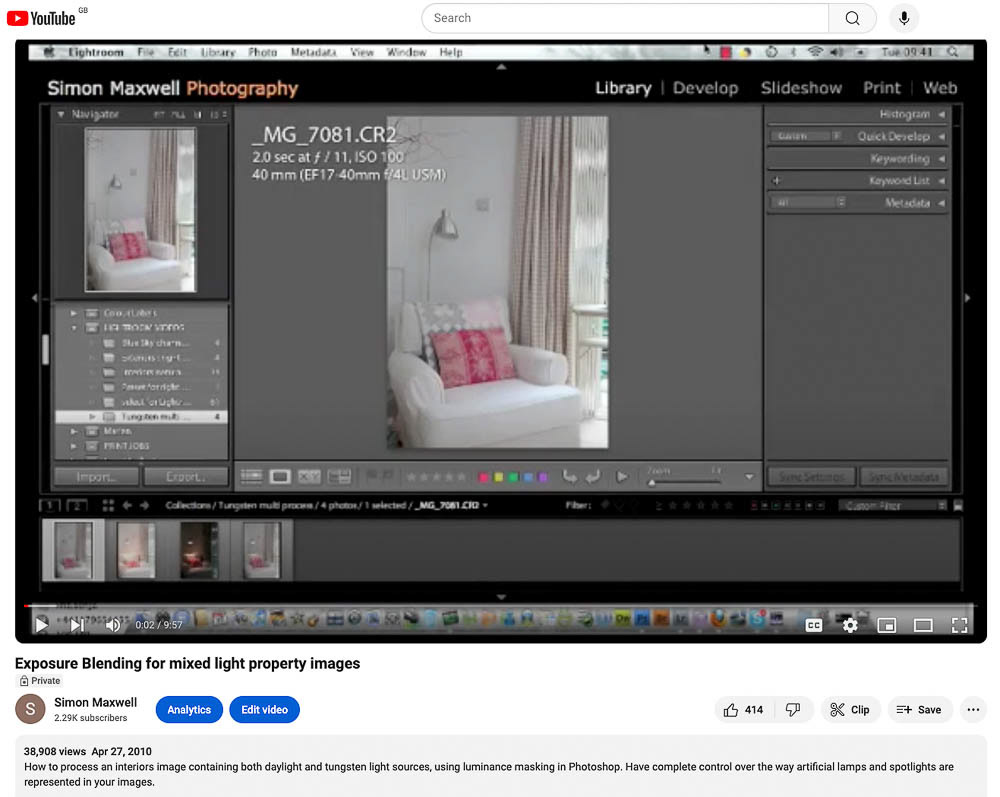
My video on Youtube about coping with mixed light scenes which made over 38,000 views
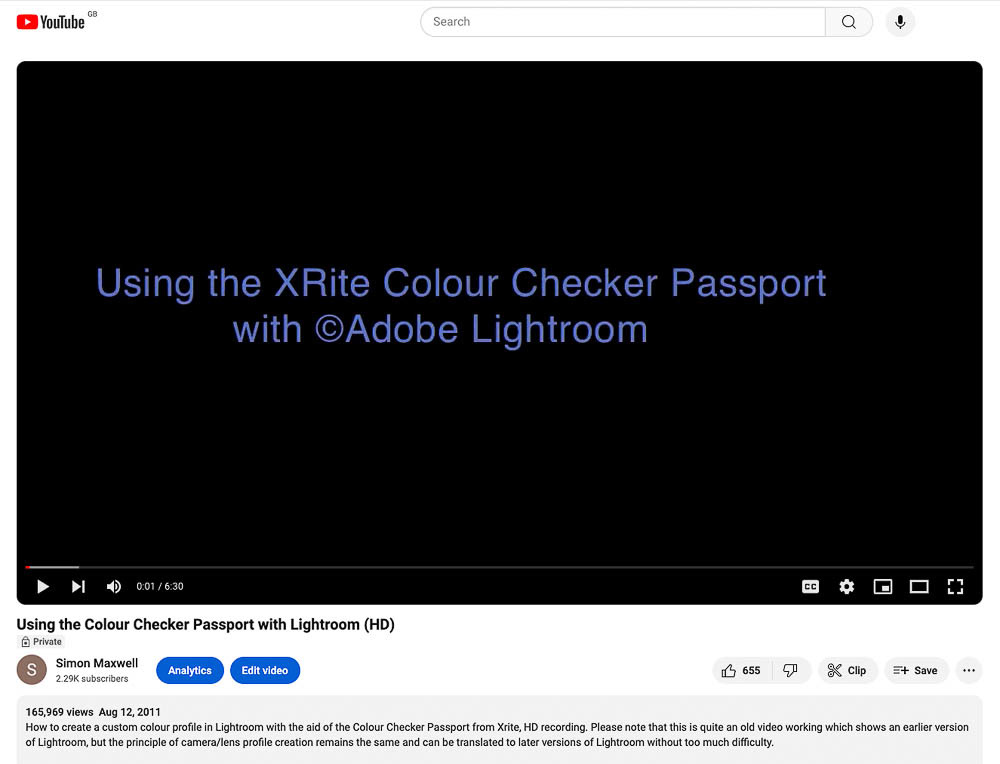
My original video about the Color Checker passport which racked up over 165,000 views
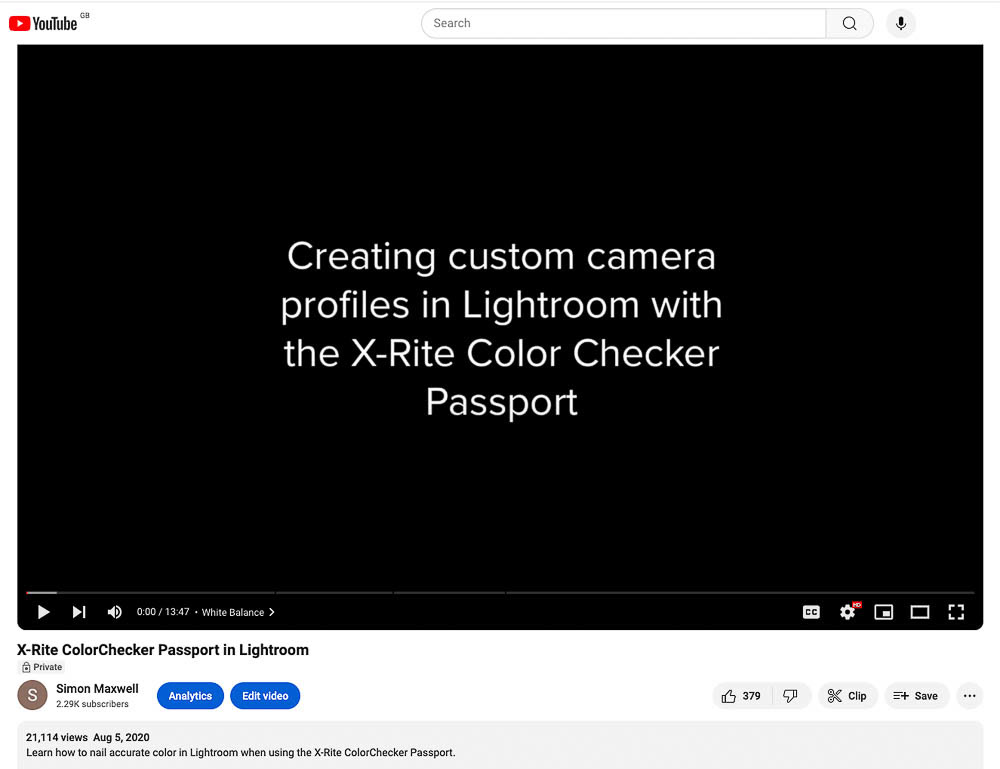
Revised video about the Color Checker passport for Lightroom with over 20,000 views
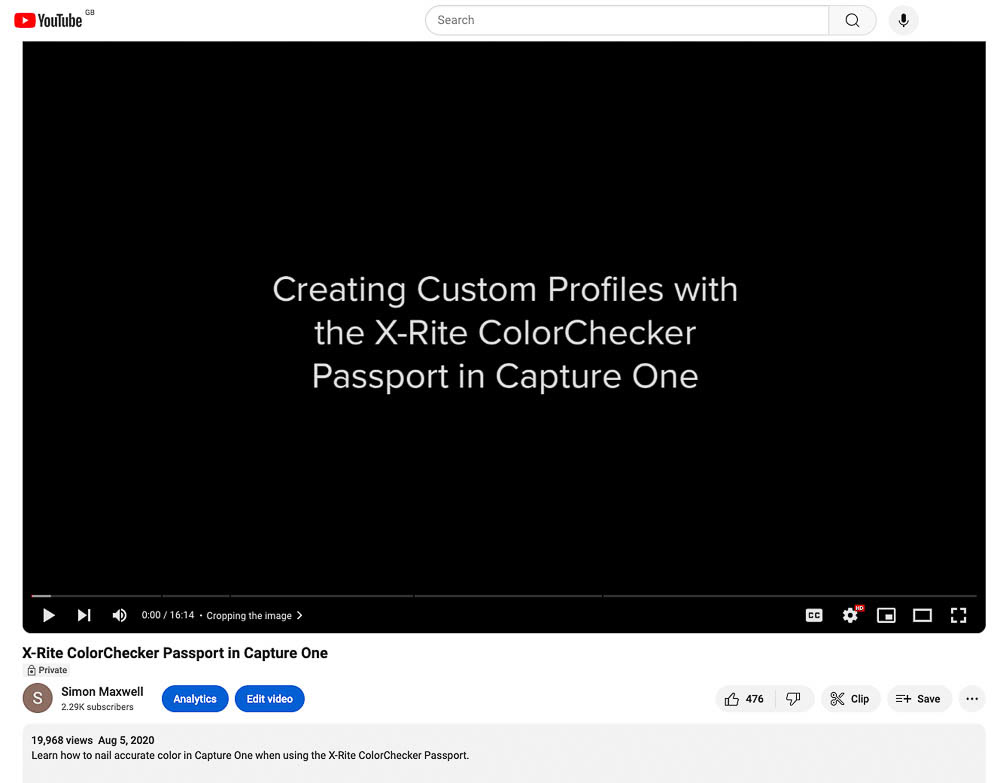
Revised video about the Color Checker Passport for Capture One with over 19,000 views
